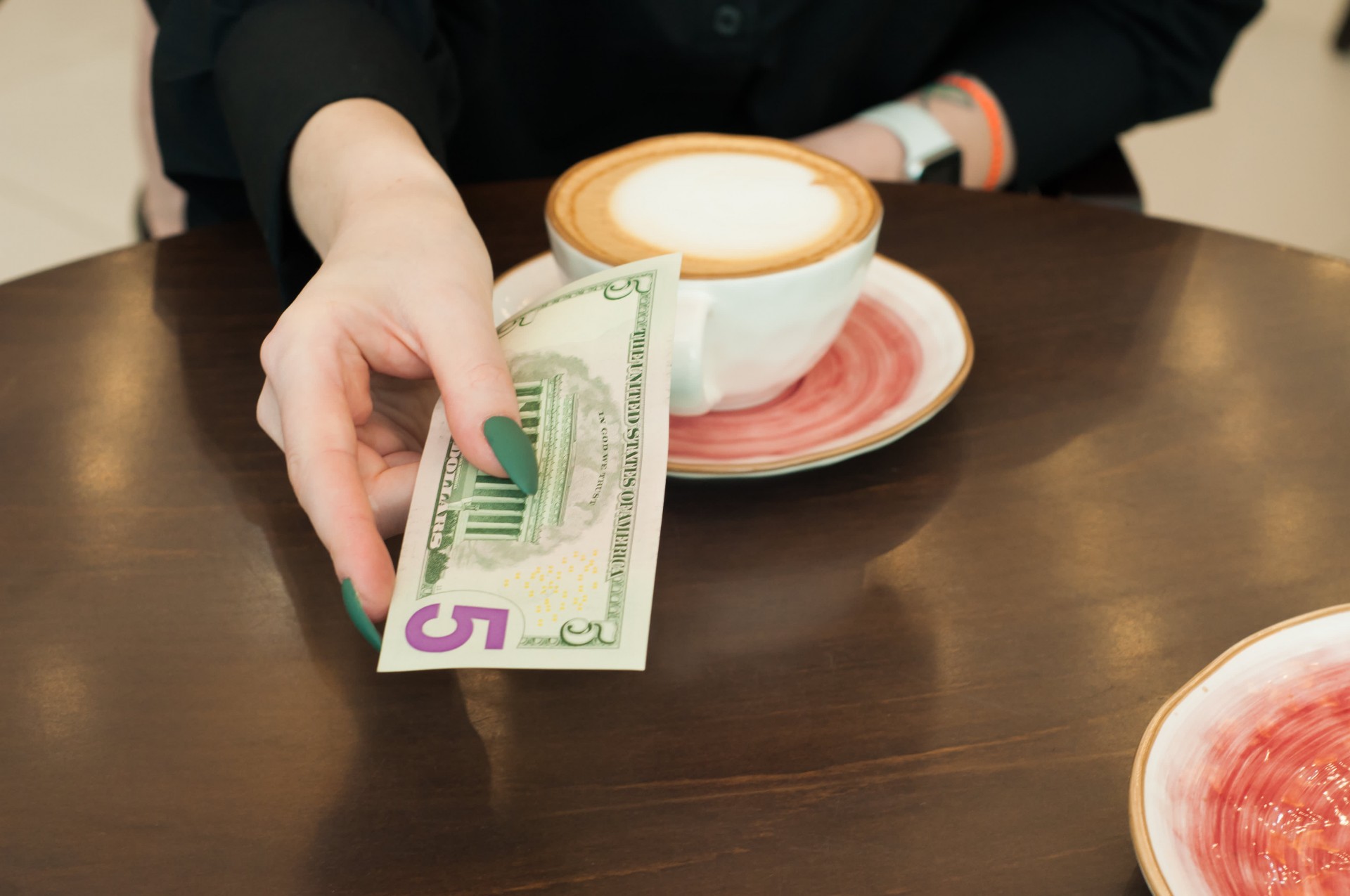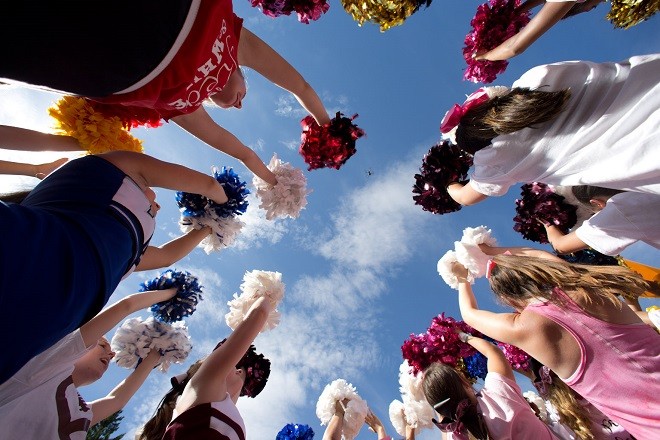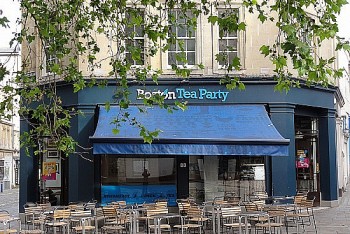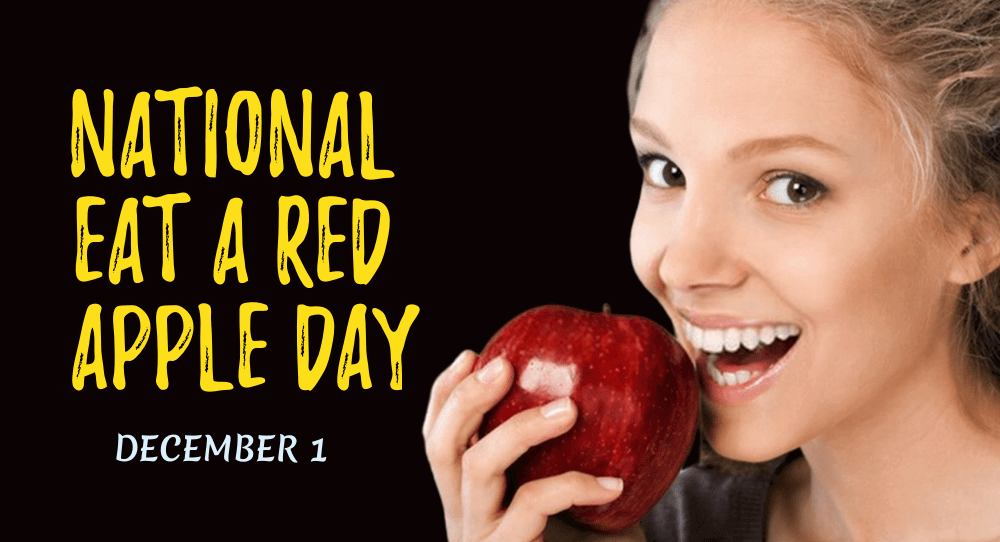Top 15 Strangest Things About the U.S That Shock the World
| Summary |
The peculiarities of America can be ascribed to a confluence of historical, cultural, and social influences that have molded the nation's evolution over time. The diverse idiosyncrasies of America mirror its intricate and evolving cultural landscape, molded by numerous influences and factors throughout history.
They enhance the nation's distinctive identity, rendering it an endlessly intriguing and diverse locale for exploration and experience.
 |
| Top 15 Weirdest American Quirks That Shock the World |
Why America Has a Rich Tapestry of Quirks?
Due to its diverse population and history of immigration, the US is often called a melting pot. Diverse cultural traditions, customs, and quirks have blended to create a unique and eclectic mix of influences.
American culture values individualism and freedom. This emphasis on individual rights and autonomy has led to diverse lifestyles, beliefs, and behaviors nationwide. Therefore, Americans are more likely to embrace quirks and eccentricities as expressions of their unique identities.
The US has adopted and adapted foreign customs, traditions, and quirks due to its long history of cultural exchange. International influences have enriched American cuisine, fashion, language, and entertainment, adding to its vibrant and varied tapestry of peculiarities.
The US's size and diversity breed quirks and idiosyncrasies. With 50 states and over 300 million people, there are bound to be regional differences, subcultures, and unique practices across the country.
Rapid industrialization, immigration, social movements, and cultural revolutions have shaped America's quirks and eccentricities. Historical events and societal changes have shaped attitudes, behaviors, and customs, creating many American cultural quirks.
Learn more: Top 40 Unwritten Rules/Etiquettes in the US You Should Be Aware
Top 15 Weirdest American Quirks That Shock the World
1. Supersized Everything
The notion that "bigger is better" is profoundly embedded in American culture. This is particularly apparent in the food and beverage sector, where portion sizes are considerably larger than those in numerous other nations. Fast food establishments such as McDonald's and Burger King popularized the concept of supersizing meals, providing enormous burgers, fries, and soda cups that significantly exceed standard sizes found elsewhere.
The trend of supersizing transcends fast food establishments. Restaurants often provide portions sufficient to satisfy two or three individuals, and the presence of all-you-can-eat buffets promotes excess consumption. This cultural phenomenon extends beyond cuisine; it is evident in the inclination towards large vehicles like SUVs and trucks, spacious suburban residences, and the extensive design of shopping malls.
Some perceive this as a reflection of American abundance and prosperity, while others condemn it for exacerbating health issues such as obesity and fostering wastefulness. The ecological ramifications of manufacturing, transporting, and disposing of substantial volumes also provoke apprehension. Nonetheless, for numerous Americans, the accessibility of substantial portions and products is a valued component of their lifestyle.
2. Tipping Culture
 |
| Tipping Culture |
Tipping is a fundamental aspect of American service industry culture, frequently perplexing to individuals from nations where tipping is less prevalent or nonexistent. Tipping is anticipated in numerous contexts in the U.S., such as restaurants, bars, hair salons, taxis, and hotel personnel. The customary tipping rate typically ranges from 15% to 20% of the total bill, and tipping below this threshold may be regarded as impolite or indicative of inadequate service.
This practice arises from the reality that numerous service industry employees receive wages below the minimum threshold, with gratuities constituting a substantial part of their earnings. Tipping is not merely an expression of gratitude; it is essential for workers to attain a sustainable income. The dependence on gratuities can impose stress on both patrons and staff, and discussions persist regarding the fairness of the system and whether employees ought to receive an increased base salary.
International travelers frequently perceive the American tipping customs as perplexing and occasionally exasperating, particularly when they lack knowledge regarding whom to tip and the appropriate amounts. Notwithstanding these challenges, tipping persists as an ingrained aspect of American society, embodying the nation's distinctive method of compensating service.
3. Ice, Ice, Baby
Americans possess a significant affinity for ice. It is customary to fill glasses to the top with ice prior to adding any beverage, including water, soda, or cocktails. This practice astonishes numerous visitors from Europe and other regions where beverages are generally served with minimal or no ice.
The inclination towards chilled drinks can be attributed to various factors, such as the warm climate prevalent in numerous regions and the historical availability of ice facilitated by advancements in refrigeration technology. The ubiquitous presence of ice machines in residences, eateries, and hotels exacerbates this fixation.
Some individuals value the invigorating coldness of the drinks, while others believe it diminishes the flavor and decreases the volume of the beverage itself. The cultural significance of ice in American beverages is indisputable and continues to be a fundamental aspect of the dining experience.
4. Air Conditioning Everywhere
Air conditioning is nearly omnipresent in the United States, with almost every residence, workplace, and public area outfitted with A/C units. This differs from numerous countries where air conditioning is considered a luxury or utilized solely during severe weather conditions. In the United States, it is prevalent for air conditioning systems to operate throughout the year, ensuring indoor temperatures remain consistently cool even during temperate conditions.
The dependence on air conditioning is due to the nation's varied and frequently severe climate, economic affluence facilitating extensive installation, and a cultural inclination towards comfort. Nonetheless, this reliance presents disadvantages, such as elevated energy consumption and considerable environmental repercussions.
Visitors frequently perceive American interiors as uncomfortably frigid, particularly in the summer months. Notwithstanding these criticisms, air conditioning is regarded as an indispensable element of American life, crucial for comfort and productivity.
 Top 10 High-Quality Air Conditioner Brands In The US Top 10 High-Quality Air Conditioner Brands In The US |
5. The Pledge of Allegiance
 |
| The Pledge of Allegiance |
The Pledge of Allegiance is a patriotic tradition practiced in schools across the United States. Each morning, students stand, face the flag, place their right hand over their heart, and recite the pledge. This daily ritual, intended to express loyalty to the nation and its values, is a unique feature of American education.
Francis Bellamy wrote the Pledge of Allegiance in 1892, and it has undergone a number of changes, the most notable of which was the addition of the phrase "under God" in 1954 during the Cold War. The practice of reciting the pledge has been both praised as a unifying and patriotic act and criticized as a form of enforced nationalism.
For international visitors, the practice can seem unusual and overly formal. In many countries, expressions of patriotism are reserved for specific holidays or events rather than daily routines. The pledge is a reflection of the strong sense of national identity and pride that characterizes American society.
While some question the relevance and appropriateness of the Pledge of Allegiance in a diverse and multicultural society, it remains a steadfast tradition in American schools, symbolizing the enduring values of unity and patriotism.
6. Drive-Thru Convenience
Drive-thrus are an essential aspect of American convenience culture, providing a rapid and efficient means for individuals to obtain various goods and services without exiting their vehicles. Since their popularization by fast food restaurants in the mid-20th century, drive-thrus have expanded to encompass a diverse array of businesses, including banks, pharmacies, coffee shops, and dry cleaners.
The allure of drive-thrus resides in their convenience and efficiency in saving time. They accommodate hectic lifestyles, enabling customers to order and obtain their items without the inconvenience of parking or queuing. Drive-thrus are especially favored in suburban and automobile-dependent regions, where driving predominates as the main mode of transportation.
Although drive-thrus provide significant convenience, they also pose environmental concerns, as idling vehicles exacerbate air pollution and greenhouse gas emissions. The expansion of drive-thrus has faced criticism for encouraging sedentary lifestyles and exacerbating health problems such as obesity.
Notwithstanding these critiques, drive-thrus continue to be a pervasive aspect of American culture, reflecting the nation's prioritization of efficiency and convenience.
7. Cheerleading and Homecoming
 |
| Cheerleading and Homecoming |
Cheerleading and homecoming are deeply ingrained traditions in American high schools and colleges, reflecting the country's enthusiasm for sports and school spirit. Cheerleading, originally conceived as a way to encourage and support athletic teams, has evolved into a competitive sport of its own, with intricate routines and elaborate performances.
Homecoming, typically held in the fall, is a celebration that welcomes back former students and alumni. It often includes events such as football games, parades, dances, and pep rallies. Homecoming queens and kings are elected, and schools may decorate with elaborate floats and banners.
These traditions are depicted in countless movies and TV shows, often portraying exaggerated versions of the events. However, for many Americans, cheerleading and homecoming are cherished aspects of their school experience, fostering camaraderie and school pride.
While cheerleading and homecoming may seem peculiar to those from other countries, they are integral parts of American culture, reflecting the importance placed on sports, community, and tradition.
Read More: Top 10 Weirdest National Holidays In The U.S
8. Pharmacies Selling Groceries
In the United States, pharmacies serve not only as venues for prescription fulfillment but also as compact grocery stores, providing an assortment of household products, snacks, and convenience items. This amalgamation of services provides convenience for consumers, enabling them to accomplish multiple tasks in a single location.
The trend of pharmacies offering groceries originates from the development of the American retail environment. As major pharmacy chains broadened their product selections to rival supermarkets and convenience stores, they commenced offering a more extensive array of items, encompassing food and beverages.
Although some may consider it unusual to purchase groceries in conjunction with medications, for numerous Americans, it represents a pragmatic solution that conserves time and effort. This convergence of services has elicited concerns regarding the monopolization of the retail sector and its effects on smaller, independent enterprises.
Notwithstanding these apprehensions, the proliferation of pharmacies retailing groceries persists, mirroring the changing demands and inclinations of American consumers.
9. Friendly Strangers
 |
| Friendly Strangers |
Americans are recognized for their extroverted and amiable disposition, frequently initiating conversations with unfamiliar individuals in diverse environments. The propensity for casual conversation, referred to as "small talk," is a cultural standard in the United States and may astonish individuals from nations where such exchanges are infrequent.
The amicability of strangers in the U.S. can be exhibited through diverse interactions, ranging from informal discussions with neighbors to initiating dialogues with fellow commuters on public transit. Americans may engage in cordial interactions with cashiers, waitstaff, or individuals in queues, regardless of prior acquaintance.
Some may regard this behavior as welcoming and inclusive, while others may view it as intrusive or insincere. For numerous Americans, small talk serves to establish connections, mitigate social discomfort, and exhibit courtesy.
Notwithstanding cultural disparities, Americans' readiness to interact with unfamiliar individuals exemplifies a wider ethos of hospitality and openness that characterizes American society.
10. The Metric System Exception
The United States is one of the few nations globally that has not completely embraced the metric system, opting instead for customary units like inches, feet, pounds, and gallons. This inconsistency may confuse visitors from nations that utilize the metric system as the norm.
The origins of America's adoption of customary units can be attributed to historical and cultural influences. Despite attempts to implement the metric system since the 19th century, resistance has arisen due to inertia, expense, and apprehensions regarding the feasibility of conversion.
Consequently, Americans persist in utilizing customary units in everyday life, resulting in sporadic confusion and misinterpretations, especially in international contexts. For instance, recipes, road signs, and product labels in the United States frequently utilize customary units, necessitating visitors to perform conversions or depend on estimations.
Despite the worldwide dominance of the metric system, the United States persists in utilizing customary units, underscoring the nation's distinctive methodology regarding measurement and standardization.
11. Bathroom Stalls with Gaps
 |
| Bathroom Stalls with Gaps |
Public restrooms in the United States frequently exhibit stalls with conspicuous gaps between the doors and partitions, providing diminished privacy compared to what many foreigners expect. This design peculiarity may be unexpected and disconcerting for visitors from nations where restroom stalls offer greater privacy.
The reasoning for the openings in American bathroom stalls is predominantly utilitarian. They facilitate improved ventilation and enable cleaning personnel to oversee the stalls for occupancy and hygiene more effectively. The gaps are designed to discourage inappropriate conduct and enhance safety by enabling individuals to ascertain if someone is present in the stall.
Although some Americans may overlook the gaps, visitors from cultures that prioritize privacy may perceive them as intrusive and disconcerting. Nonetheless, the existence of gaps in bathroom stalls is a persistent tradition in the United States that appears unlikely to vanish.
12. Sales Tax Surprises
A notable aspect of shopping in the United States that frequently astonishes visitors is the imposition of sales tax at the point of purchase. In contrast to numerous other nations where taxes are incorporated into the displayed price, sales tax in the U.S. is computed and appended to the total at the time of purchase.
This practice may result in confusion and frustration, particularly for tourists unacquainted with the system. The sales tax rate differs by state, county, and city, resulting in pricing inconsistencies across various locations. Moreover, certain items may be exempt from sales tax, thereby complicating the situation further.
The sales tax system in the U.S. may confuse visitors, yet it is firmly entrenched in American retail culture. Attempts to optimize or reform the system have encountered opposition due to apprehensions regarding revenue depletion and administrative intricacy.
13. Peanut Butter Obsession
 |
| Peanut Butter Obsession |
Peanut butter occupies a significant position in American cuisine and culture, with numerous Americans exhibiting a profound fondness for this creamy or crunchy spread derived from ground peanuts. Peanut butter serves as a popular sandwich filling and a versatile ingredient in numerous dishes, including cookies, cakes, savory sauces, and dips.
The inception of peanut butter can be traced to the United States, where it attained popularity in the early 20th century as a nutritious and economical protein source. Currently, peanut butter is a ubiquitous staple in numerous American households, appreciated by individuals of all ages.
Although peanut butter is consumed globally, its prevalent usage and cultural importance in the United States may astonish visitors. While some may regard the fixation on peanut butter as perplexing or humorous, for numerous Americans, it is merely a cherished comfort food.
14. Customer Service Enthusiasm
Customer service in the United States is frequently distinguished by its zealous and vigilant demeanor. Americans expect cordial and proactive assistance while shopping in stores, dining at restaurants, or engaging with customer service representatives.
This elevated standard of customer service is fundamentally embedded in American business culture and signifies a dedication to fulfilling customer needs and expectations. Employees receive training to be polite, helpful, and attentive to customer inquiries and concerns, frequently exceeding expectations to guarantee customer satisfaction.
Some individuals may value the enthusiasm of American customer service, while others may perceive it as excessive or insincere. Nonetheless, the focus on customer service is regarded as a competitive advantage for enterprises and a crucial factor in fostering customer loyalty and repeat patronage.
15. Sports Overload
Sports, especially football, basketball, and baseball, occupy a significant position in American culture, with millions of enthusiasts engaging in game viewership and tracking their preferred teams and athletes. The prominence of sports in the United States is manifested through extensive media coverage, the proliferation of sports bars and merchandise, and a passionate fan base.
The American sports culture can be daunting for visitors from nations where sports play a less pivotal role in everyday life. The fervor for sports extends beyond professional leagues; collegiate athletics, high school sports, and recreational leagues also garner considerable attention and support.
The prominence of sports in American culture is due to various factors, such as the nation's extensive athletic heritage, the abundant access to sports facilities and programs, and the function of sports as a means of fostering unity and community cohesion.
The magnitude of sports enthusiasm in the United States may astonish some visitors; however, for numerous Americans, sports transcend mere games—they represent a profound source of passion, pride, and identity.
Final Thoughts
These idiosyncrasies, although peculiar to some, constitute an integral aspect of American culture's uniqueness and allure. They provide insight into the quotidian existence of Americans and underscore the varied lifestyles and interactions of individuals globally.
 Top 7 Weirdest Shopping Malls Around The World Top 7 Weirdest Shopping Malls Around The World For shopaholics, shopping malls are a dream come true. You can get the impression that you are lost in a river city or the entertainment ... |
 Top 15 Weirdest and Funny Political Parties Around the World in History Top 15 Weirdest and Funny Political Parties Around the World in History There have been several political parties throughout history that have attempted to demystify the turbulent realm of politics while harboring less than serious political objectives. ... |
 12 Weirdest and Funny Holiday Observances around the World 12 Weirdest and Funny Holiday Observances around the World Have you ever wondered which holidays are the strangest? Which holidays are unusual? Let's look closely! |


























